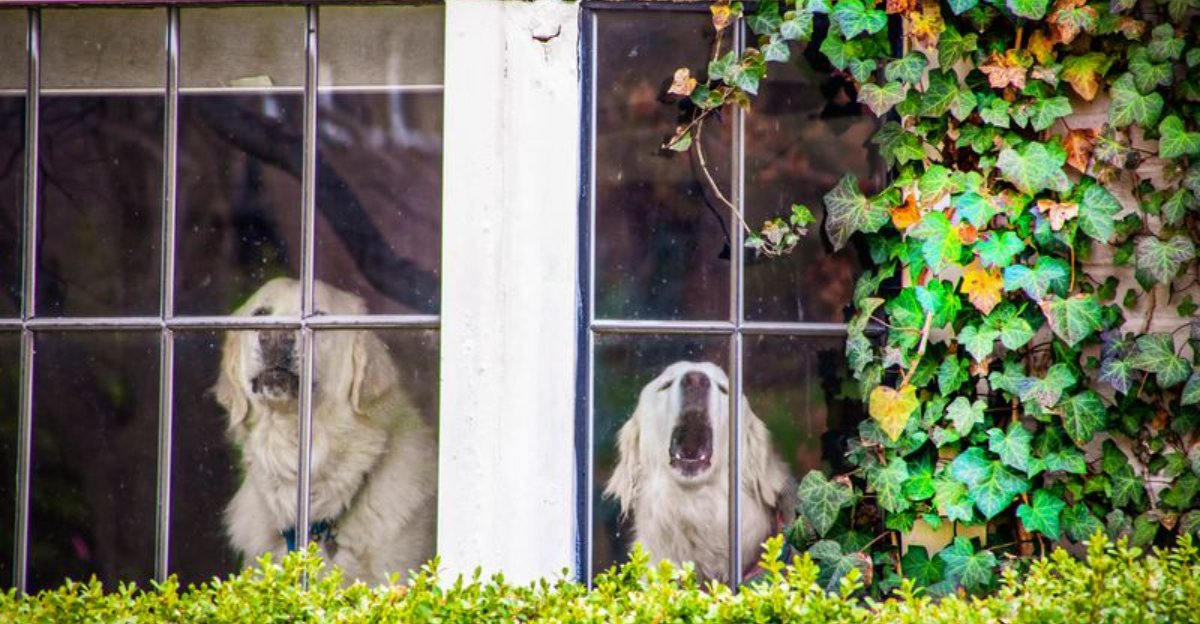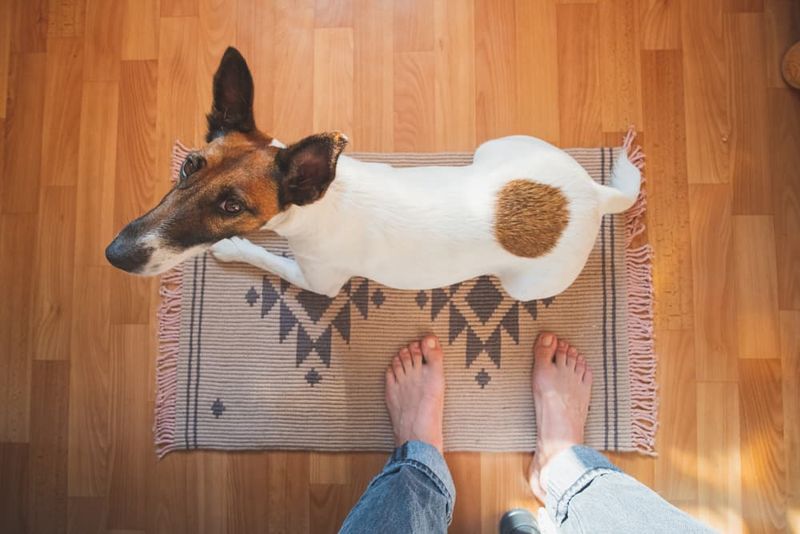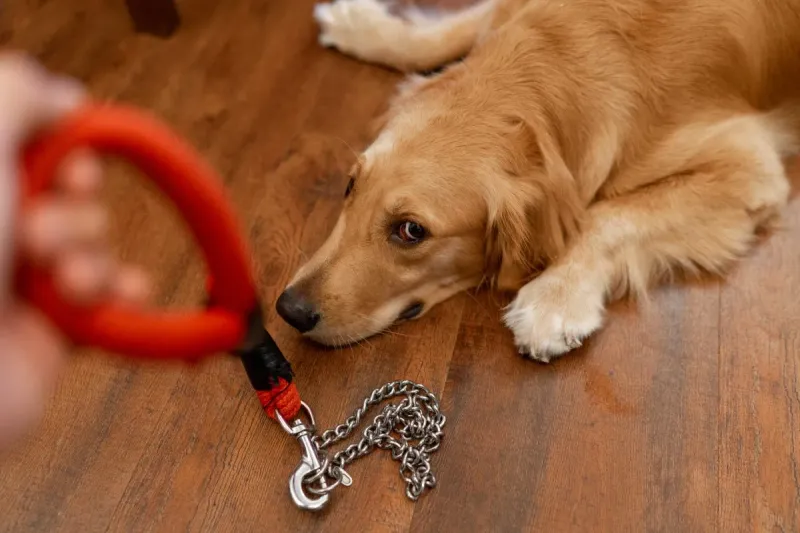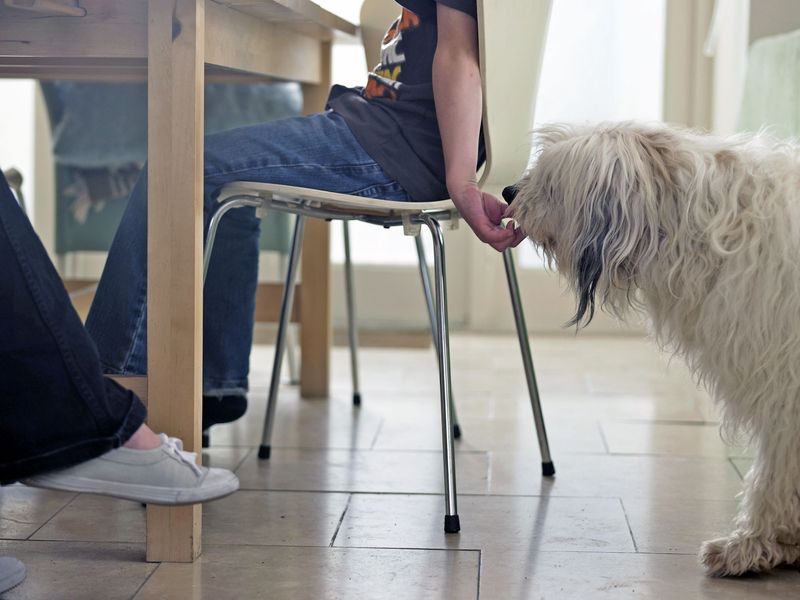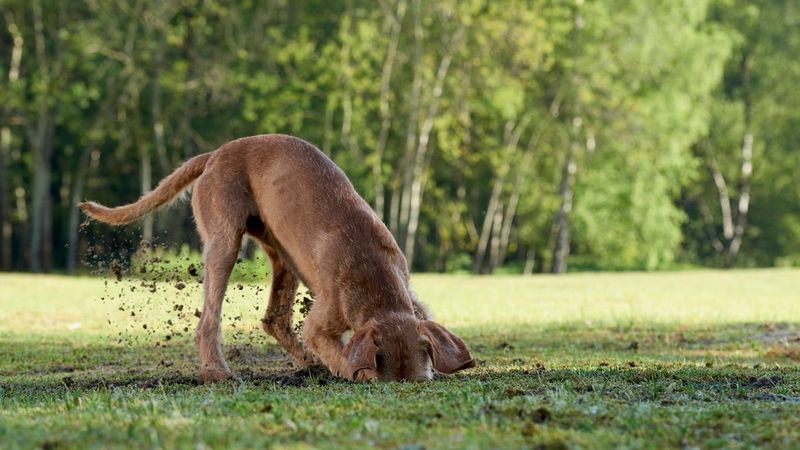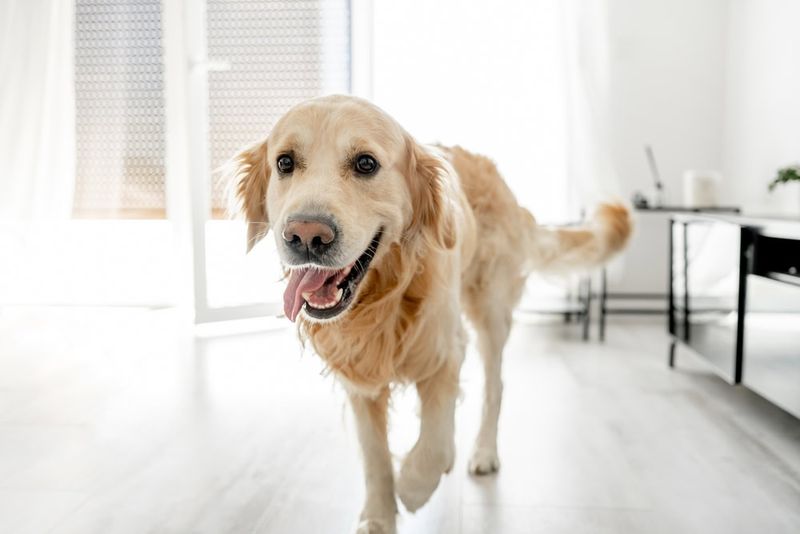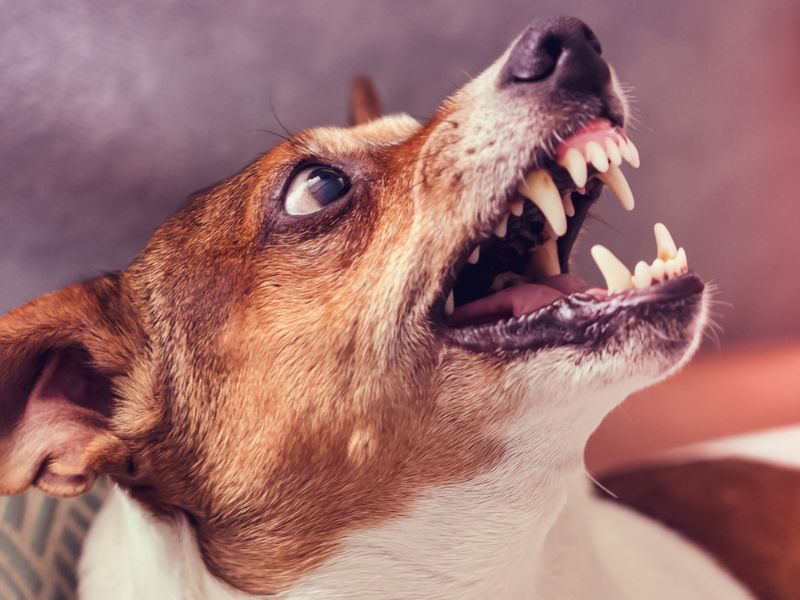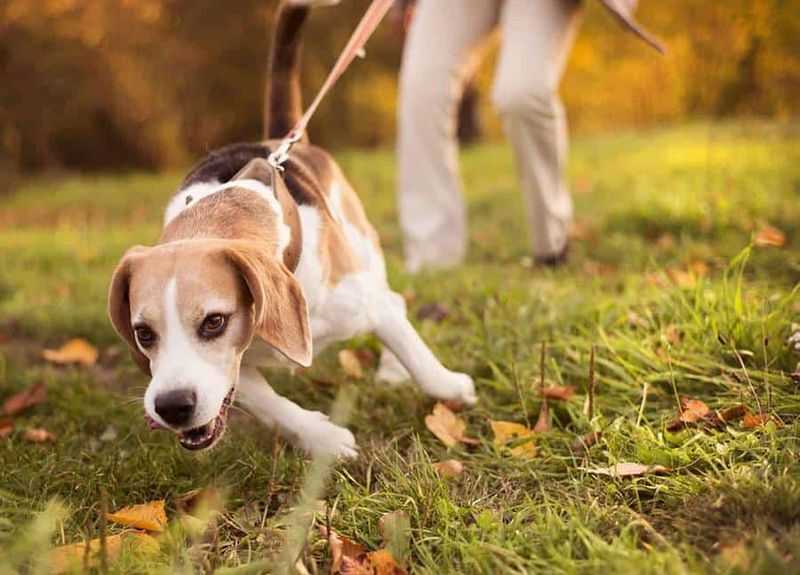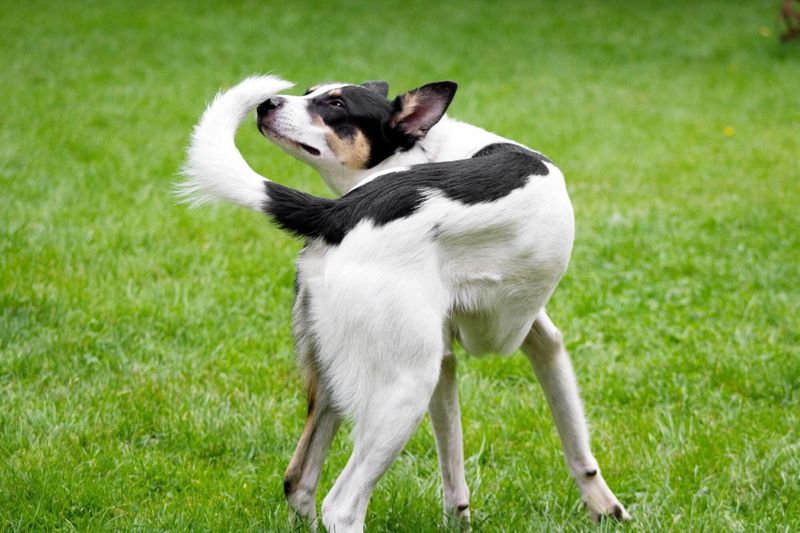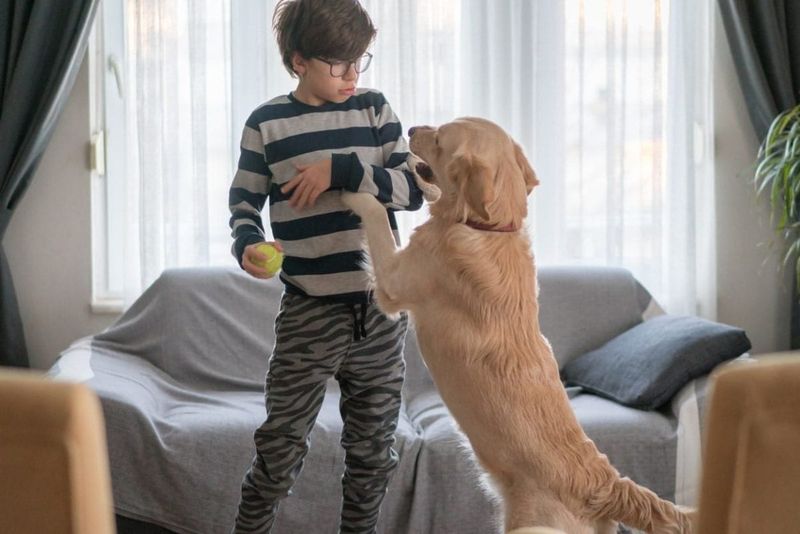Dogs are beloved companions, but sometimes their behaviors can be perplexing. Understanding these behaviors can help you recognize when your furry friend might need more attention or when they’re simply bored. Here’s a comprehensive guide to decode those signals.
Destructive Chewing
Returning to a house full of shredded pillows or shoes is frustrating. Destructive chewing is commonly associated with a dog’s need for more attention. When dogs feel ignored, they find other ways to occupy themselves.
Chewing releases stress and can be an outlet for pent-up energy. While boredom might cause it too, ensure your dog has enough mental stimulation and exercise. Consider interactive toys or puzzles to keep their mind engaged.
Ensuring your dog feels secure and noticed can prevent your furniture from becoming their next chew toy.
Excessive Licking
Excessive licking—whether it’s their paws, your hand, or even the floor—can be a sign your dog needs more attention.
This behavior can signify anxiety or stress, possibly due to feeling neglected. Engaging them with playtime or simple cuddles can often alleviate this.
Yet, in some cases, obsessive licking could indicate a medical issue, so consult with a vet if it persists. By ensuring your dog feels loved and secure, you can curb the behavior and enjoy more peaceful times together.
Following You Constantly
If your furry friend follows you around like a shadow, it could be a sign they’re asking for more attention. Dogs are pack animals and naturally seek companionship, especially from their human family.
While some dogs are naturally clingy, a sudden increase in this behavior might indicate they’re feeling overlooked. Spend quality time with your dog, whether it’s through walks, play, or simply being together.
By acknowledging their presence, you reassure them of their place in your pack and fulfill their emotional needs.
Ignoring Commands
Your dog might be choosing to ignore you if they feel neglected. Ignoring commands can be a sign of frustration or a plea for more interaction.
Dogs need consistent training and reminders of their roles, but they also need affection and attention from their humans. Make training sessions more engaging by incorporating play and treats to keep your dog’s interest.
By balancing discipline with love, you can ensure your dog feels valued and more willing to listen.
Skipping Meals
If your dog is leaving their meals untouched, it could mean they need more attention. Dogs, much like humans, might lose appetite when they’re feeling ignored or stressed.
While skipping meals can also indicate boredom with their food, or even health issues, ensure you’re giving them enough attention first. Try feeding them with your presence nearby, or add a little play before meals to stimulate their interest.
Ensuring your dog feels attended to might rekindle their interest in food, and improve their overall well-being.
Constant Barking
Does your dog seem to bark incessantly at every little noise? This might signal they’re craving more attention from you. Dogs are social creatures, and barking can be their way of communicating loneliness.
In some cases, boredom can also trigger this behavior, but if it’s consistent and directed at you or family members, it might be a call for more interaction. Try engaging your dog with games or a walk to see if this behavior subsides.
Engaging in activities together can strengthen your bond and alleviate the need for constant barking.
Excessive Sleeping
Notice your dog sleeping more than usual? Excessive sleep can be a sign of needing more attention, as dogs may use it to escape loneliness.
However, it’s essential to distinguish between normal age-related sleep and behavior-driven sleep. Spend time engaging your dog with walks or play to see if it rejuvenates their spirit.
While sleeping might seem like a cozy escape, too much of it can indicate deeper emotional needs. Listen to your dog’s cues and show them they are an important part of your life.
Potty Accidents Indoors
Indoor potty accidents from a well-trained dog might signal a need for more attention. Dogs might resort to such behavior when they’re feeling overlooked or anxious.
Ensure your dog gets enough breaks and engage them with interactive activities. Sometimes, a simple change in routine can rekindle their house training skills.
While boredom might contribute, consistent accidents often point to emotional distress. Reassure your dog with regular schedules and affectionate interactions, showing them they’re not alone.
Whining or Crying
A dog that frequently whines or cries might be signaling a need for more affection. This behavior is often a plea for attention, especially if it’s a new development.
Dogs vocalize their emotions, and whining can be their way of expressing loneliness or anxiety. Engage with your dog through play, or comfort them to ease their distress.
If whining persists, consider underlying health issues, but often, increased interaction and reassurance can soothe their whimpers and strengthen your bond.
Digging Holes
Digging can be more than just a fun pastime for your dog; it can signal a need for more attention. Dogs dig for various reasons, boredom being a primary one.
Yet when coupled with other signs, it might point to a desire for interaction. Giving your dog plenty of exercise and activities can mitigate this behavior.
A well-tended garden is great, but ensuring your dog feels noticed and engaged will stop them from turning your yard into a personal excavation site.
Pacing Back and Forth
A dog that paces frequently might be trying to communicate a need for more attention. Pacing can reflect anxiety or restlessness, often due to feeling neglected.
Spend quality time with your dog, offering them mental and physical engagement to alleviate their pacing. Disrupt their restlessness with stimulating activities or new games.
While some pacing is normal, excessive pacing can indicate deeper issues. By showing your dog affection and attention, you can ease their mind and reduce their restless behavior.
Growling or Snapping
Growling or snapping, especially from a typically friendly dog, can signify a need for more attention. Dogs might resort to aggressive behaviors when they’re feeling stressed or ignored.
It’s crucial to address this behavior with understanding. Increase interaction with your dog through positive reinforcement and activities that promote trust.
While some growling might be out of boredom, consistent snapping is a sign of distress. Ensuring your dog feels loved and secure can help them find their calm demeanor again.
Pulling on the Leash
Is your dog pulling on the leash more than usual? This might indicate they need more than just a quick walk. Pulling can be a sign of excitement or a plea for more interaction.
While training is essential to curb this behavior, ensuring your dog gets enough attention during walks can make a difference. Engage with them by varying routes or playing along the way.
A simple walk can become an adventure, showing your dog they’re cherished and attended to.
Tail Chasing
A dog chasing its tail might seem amusing, yet it can be a call for more attention. This behavior often arises from boredom or lack of stimulation.
Engaging your dog with interactive play or mental exercises can curb their need to chase their tail. Provide them with challenges and toys that stimulate their curiosity.
Understanding their need for engagement can stop the tail-chasing antics and create a more fulfilling environment for your dog.
Yawning Excessively
Excessive yawning in dogs might indicate more than just tiredness. Like humans, dogs yawn when they’re stressed or anxious, often due to feeling neglected.
By spending quality time with your dog, you can ease their anxiety and reduce the need for constant yawning. Offer a comforting presence and engage them with activities they enjoy.
While yawning can seem trivial, it’s a subtle hint from your dog that they crave more attention.
Licking Furniture
When your dog starts obsessively licking furniture, they’re likely trying to tell you something. This behavior often arises from stress or anxiety due to a lack of attention.
Spend time engaging with your dog, offering them alternative outlets like chew toys or playtime. Your presence can provide comfort and prevent them from seeking solace in couch arms.
Understanding their need for interaction can stop the furniture licking and foster a more harmonious home.
Jumping on People
Ever wondered why your dog constantly jumps on guests? This might be their way of seeking attention. Dogs jump to greet and interact when they feel ignored.
Training your dog to sit or stay when guests arrive can help, but also ensure they get enough interaction and playtime otherwise. Offer them attention generously, so they don’t have to jump to be noticed.
While jumping can be frustrating, it’s a clear sign your dog desires more of your presence.
Lethargy and Disinterest
A lethargic or disinterested dog might be signaling a need for more attention. While health issues could be a cause, lack of interaction often leads to such behavior.
Engage your dog with activities that spark their interest, whether it’s a new game or a different walking route. Your involvement can rekindle their enthusiasm and energy.
By understanding their cues, you ensure your dog feels valued and prevent the onset of lethargy.
Playing with Paws
A dog that repeatedly plays with its paws might be bored or seeking attention. This behavior can be soothing, but also a sign of needing more interaction.
Provide your dog with toys or activities that engage their mind and body, offering a productive outlet instead of idle paw play.
Understanding their need for stimulation can redirect their focus and enrich their daily routine.
Avoiding Eye Contact
A dog that suddenly avoids eye contact might be telling you they need more attention. Eye contact is a form of bonding for dogs, and avoiding it can signal feeling neglected.
Spend time re-establishing trust and connection through positive interactions and quality time together.
By acknowledging their need for eye contact, you reaffirm their importance in your life and strengthen your bond.
Cowering in Corners
A dog that cowers in corners might be showing signs of distress or a need for attention. Dogs often retreat when they’re feeling overwhelmed or ignored.
By offering comfort and reassurance, you can help your dog feel more secure. Spend time engaging with your pet, offering gentle affection and familiar routines.
Understanding their need for attention can bring them out of the shadows and into a more confident light.
